I have a couple of gardens that do well in the spring when the sun isn’t as intense but come late July everything dries up. It doesn’t matter how much I water those gardens (which I do sparingly as I don’t want to use up precious well water), the sun is just too intense.
The plants look, quite literally, as if they’ve been fried. I’ve tried a number of different late-blooming flowers to fill these garden areas, to crowd out the dried-up spring flowers and give the space some color. Nothing worked until I was given a pack of zinnia seeds.
Surprisingly, a local garden center was handing out zinnia seed packages for free. Now, who can resist something that is free? Not having grown this flower before, I read the information on the back of the package. That’s when I discovered the reason for the free packages. Someone hadn’t proofread the information, and there was a major typo. I can’t remember what the typo was, but I am thankful for the seeds. I was able to experiment at no cost, and it really paid off.
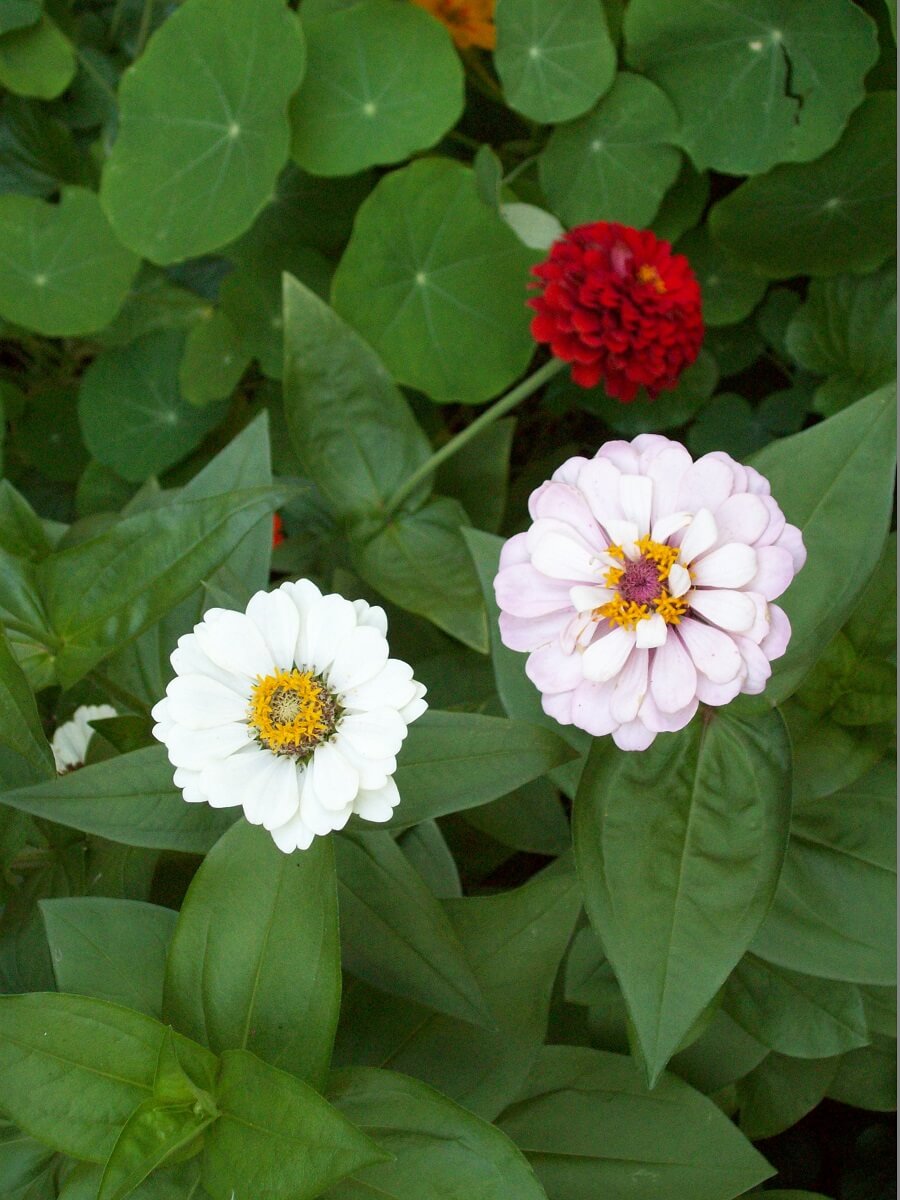
I planted the zinnia seeds in several different garden locations, but the one where it really paid off was my corner garden in front of the house where everything dries up in July. My bleeding heart and Columbine had long since finished, and the leaves were shriveling in the heat of the intense summer sun. Even my nasturtiums were struggling, and they do so well in my other gardens.
Related Post: Homestead Stories: The Balloon Flower
Some lovely green sprouts started to appear in mid-July. By then, I had forgotten my zinnia seeds and almost pulled up the plant thinking it was a weed. I’m glad I waited. I was rewarded in early August with a very prolific display of flowers of all colors, shapes, and sizes. Blooming colors that last well into autumn. It was a zinnia extravaganza.
Growing Conditions
Delighted, I did some research. Part of the sunflower and daisy family, these flowers prosper in hot, dry, arid conditions, like dry grasslands. No wonder they liked my hot little garden space!
Most zinnias are like the ones I grew: tall, upright stems, sometimes as tall as 40 inches. The leaves are medium to dark green, shiny and ranging in shape from long and spiky to short, rounded, almost oval. The thing that I found interesting is that the leaves were attached directly to the main stalk without individual stems connecting stalk to leaf. In other words, the leaves were stalkless or sessile.
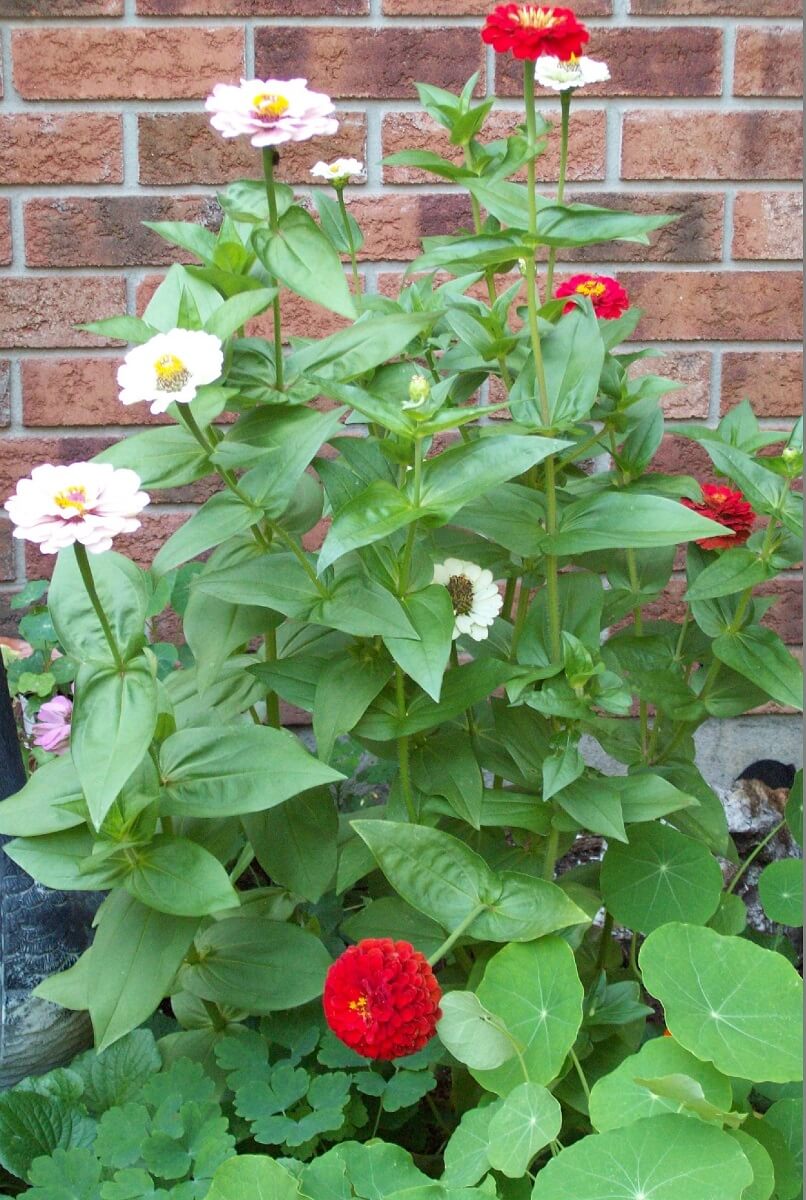
The flowers amazed me the most. All colors of the spectrum, white, yellow, orange, red, purple, lilac. Some flowers were multi-colored. The shape of the flowers varied as well. Some sported a single row of petals, while others were almost a dome shape.
And then the butterflies and hummingbirds appeared, flocking to my late-summer growth of pollinator flowers. It was a gardening dream come true.
Planting and Growing Zinnias
Zinnias are easy to grow from seeds. In fact, they reseed themselves. Or you can collect the seeds in the late fall. When the flowers start to dry, remove the flower heads and shake the arrowhead-shaped seeds on a piece of paper towel. Transfer the seeds to an air-tight container to store until the following spring.
Related Post: Bee Balm or Bee Bums?
Or, alternatively, keep the entire flower head in a sealed container and plant the entire flower head in the spring. Not only will the seeds grow, but the flowerhead will decompose in the soil, nurturing the already fertile well-drained soil that zinnias love so much.
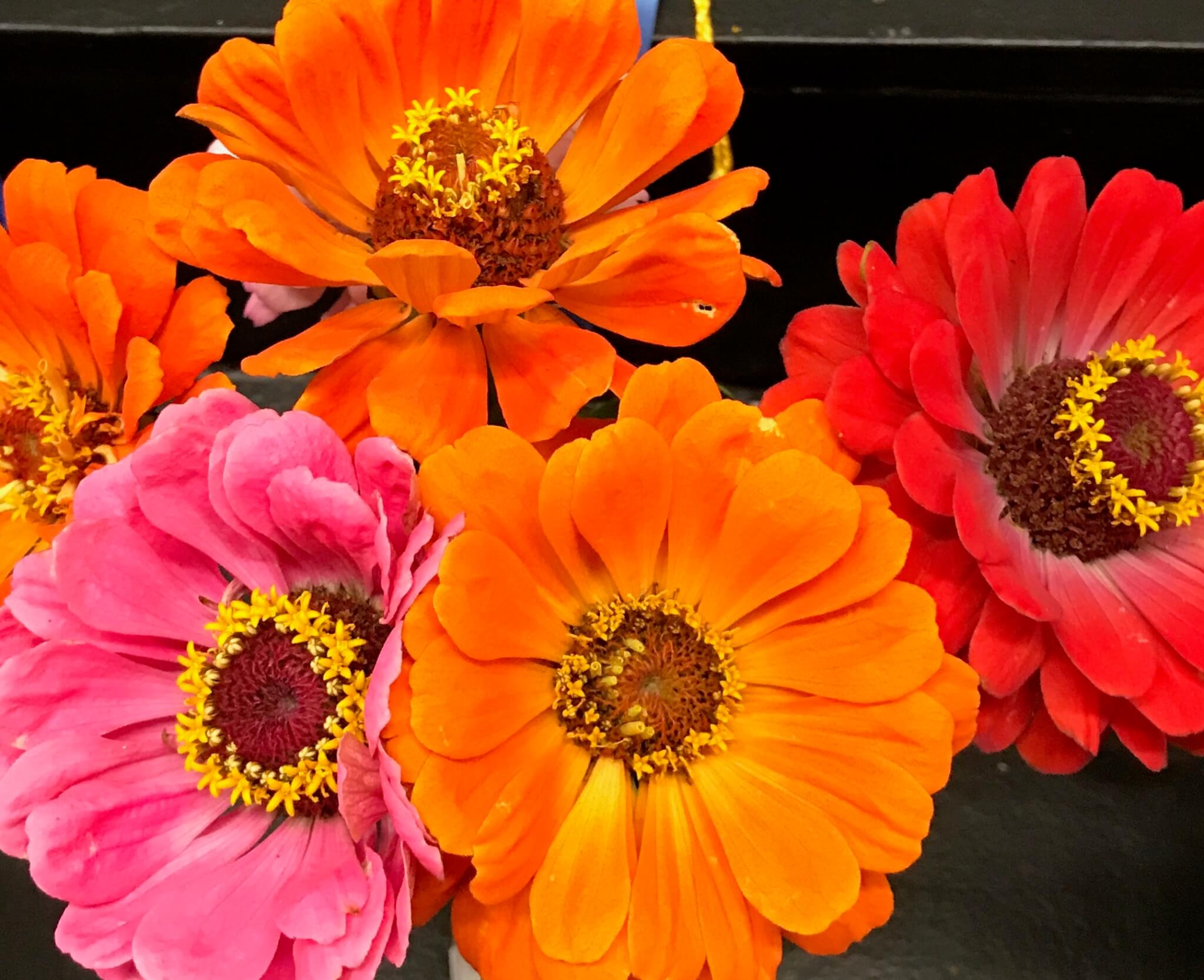
And they do love the full sun and hot summer temperatures. So, don’t expect immediate results from your plantings. Zinnias won’t poke through the earth until sometime in July, depending on the intensity of the heat and dryness.
With over a hundred different zinnia cultivars, as well as its hardy size, multi-colored varieties, and differing shapes, zinnia is a popular flowering plant, particularly in cut- flower arrangements. It also grows well in pots.
Related Post: Homestead Stories: The Outhouse Flower
If regularly deadheaded, zinnias will blossom profusely throughout the hottest days of summer and well into autumn. They are what might be termed a cut-and-come-again flower, the more you deadhead, the more flowers you’ll have.
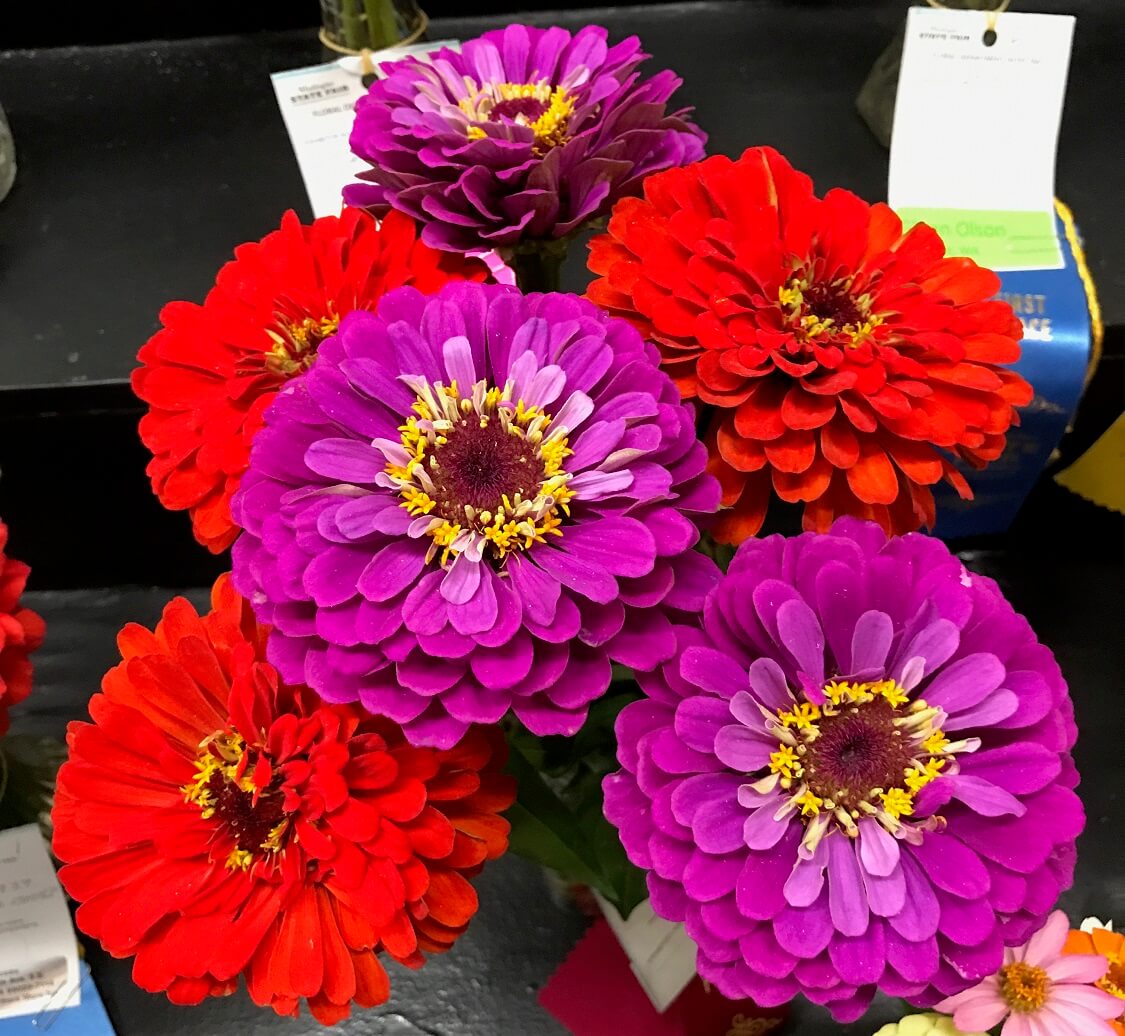
In garden areas, since it tends to grow tall, zinnias make an excellent background flower with smaller flowers towards the front edges. As a companion flower, it offers many protective benefits. It’s deer resistant, and it can be a useful defense against whiteflies. Not to mention that it attracts hummingbirds and butterflies.
Zinnias: An Intergalactic Flower
An easy care, low-maintenance plant, zinnias will grow just about anywhere. Although they prefer well-drained soil, zinnias are a hardy plant and will grow in tough soils, like hard clay. They even grow in outer space.
Although I never plan on lifting off into the outer atmosphere to find out for myself, it’s interesting to know that this plant made outer space botanical history in 2016 when NASA astronaut Kjell N. Lindgren started the rooting pillows of zinnia seeds and actually grew the plants. This allowed Earth scientists and astronauts to better understand autonomous gardening and how plants grow in microgravity. More proof that there are other forms of life beyond Earth’s hemisphere.
Common Problems With Zinnias
Hardy though they are, zinnias, like all growing things, have issues. Because they do well in hot, dry conditions, the plant doesn’t suffer from the same molds and mildews as other plants. The heat and the sun keep them dry. However, there is a condition known as white powdery mildew that can infect the lower leaves.
It doesn’t kill the plant, but it takes away from its beauty. There are resistant zinnia varieties that aren’t affected by this blight. However, since it affects the lower leaves, simple remove the infected leaves and discard these leaves. Don’t compost infected leaves as this will propagate further issues when the compost is mixed later into the soil. This also increases the airflow around the plants preventing further infection.
Another infection is leaf spot and blight. Like the powdery mildew, these conditions are a result of fungi. Remove the infected leaves, usually at the bottom, and remove any debris from around the base of the plant. Increasing airflow around the plant is the key to avoiding these unsightly infections.
Creating a Zinnia Arrangement
Since zinnia is tall, and it might look naked if the lower leaves have been removed, planting smaller plants in front of taller zinnia will hide their disproportional appearance. I have nasturtiums growing all around my zinnia.
The nasturtiums, which didn’t do well in the hot sun, picked up considerably once the zinnias started growing and blossoming. Now the nasturtiums are hiding the unsightly lower regions of the zinnia and they almost appear to be one plant with multi-shaped and multi-colored floral contributions.
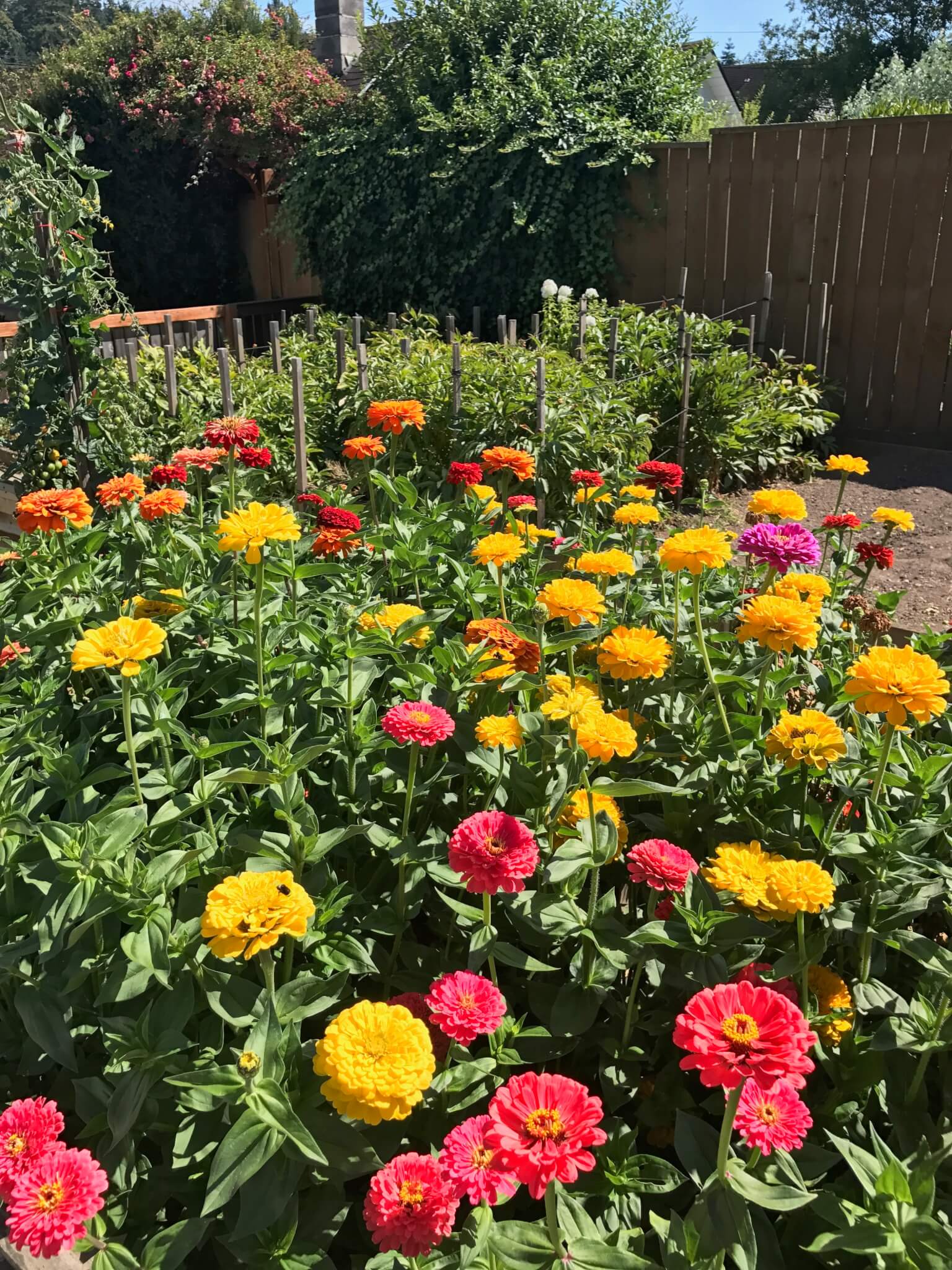
Other than adding color to the landscape, attracting butterflies and hummingbirds, and creating a colorful variety to a cut flower arrangement, can zinnias be used for anything else? Are they medicinal or edible? Well, the flowers are apparently edible, though there’s not much flavor to them.
Related Post: Summer Flowers: 10 Blooms to Make Your Garden Pop With Color
Adding zinnia flower petals to a salad or a cheeseball or making zinnia tea, is more about uniqueness and the impressive “wow” factor than it is about flavor or medicinal benefits.
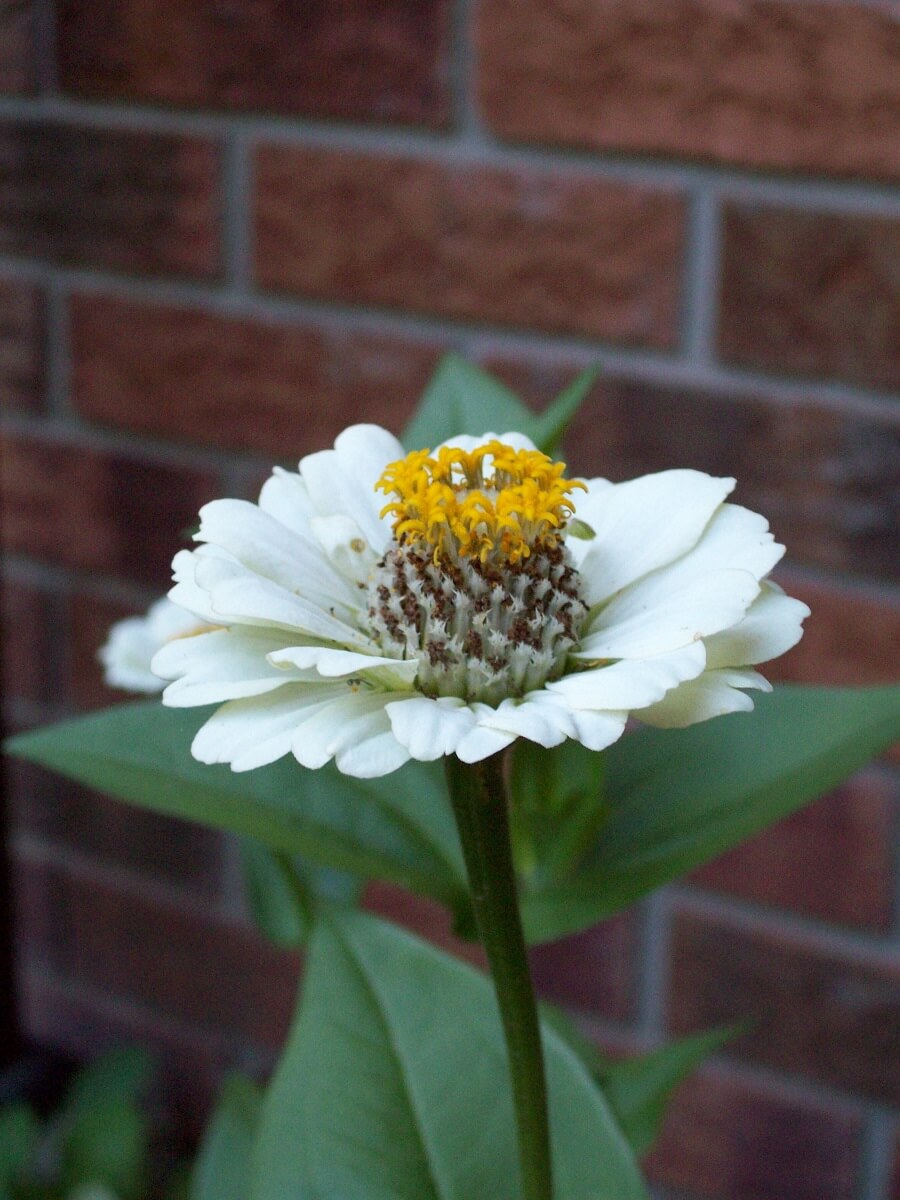
But, if you are the type who likes to experiment, then why not! Harvest the flower heads in full bloom (which, to me, seems almost criminal because then you lose the beauty benefit of the zinnia patch), wash the flower heads and shake them dry.
Pull the petals out and remove the seed, which is attached at the end. Save the seed for planting next year! Add the petals to garnish foods or drinks of your choice. Remember though, it’s more about the novelty than the taste.
Zinnia: companion flower, drought-resistant, tough, pollinator and just plain pretty, what more needs to be said? Now that I’ve enjoyed one summer of its beauty, I’m already planning many more zinnia plantings. I do believe my gardens will burst into a colorful display in the hottest, driest part of next year’s summer.


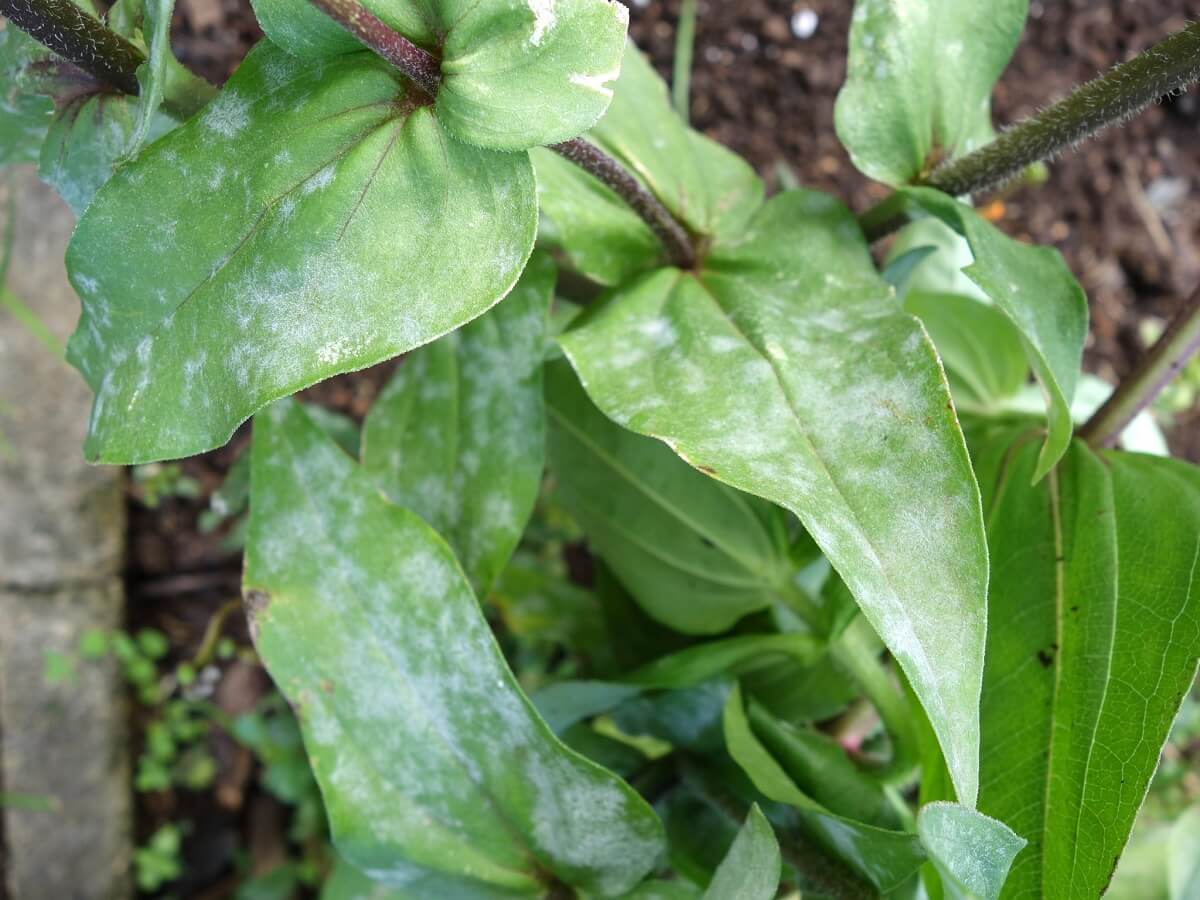



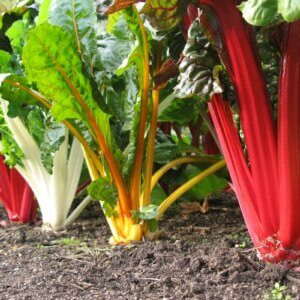

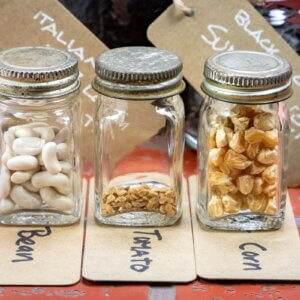










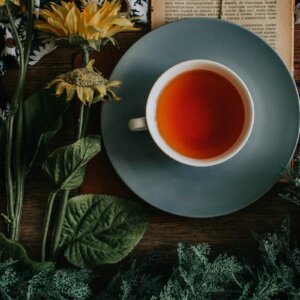























Such a wonderful article on zinnias! They were always my brother’s favorite flower to grow, so now when I grow zinnias it’s to remember my brother by, as a tribute to his life that ended much too young. Great article Emily-Jane!
These are a new favorite for me, Trisha. Glad you liked the article. After I wrote it, I discovered zinnia’s in your book, “Memory Gardens”. Great book.
Beautiful flowering plants. They surely love lots of sunlight. Bet they are normally tropical plants.